Imagine stepping onto your balcony each morning and being greeted by fresh tomatoes, fragrant tulsi, and the sweet satisfaction of knowing you’re making a real difference for the planet—all from just a few pots.
Sounds too good to be true? It’s not.
In a world where climate change, rising food prices, and shrinking green spaces affect millions of Indian households, there’s a simple yet powerful solution growing right under our noses: sustainable gardening. Whether you have a tiny balcony in Mumbai, a sunlit terrace in Bangalore, or even just a windowsill in Delhi, sustainable gardening allows you to grow fresh food, reduce waste, and contribute to a healthier environment—without needing a degree in horticulture.
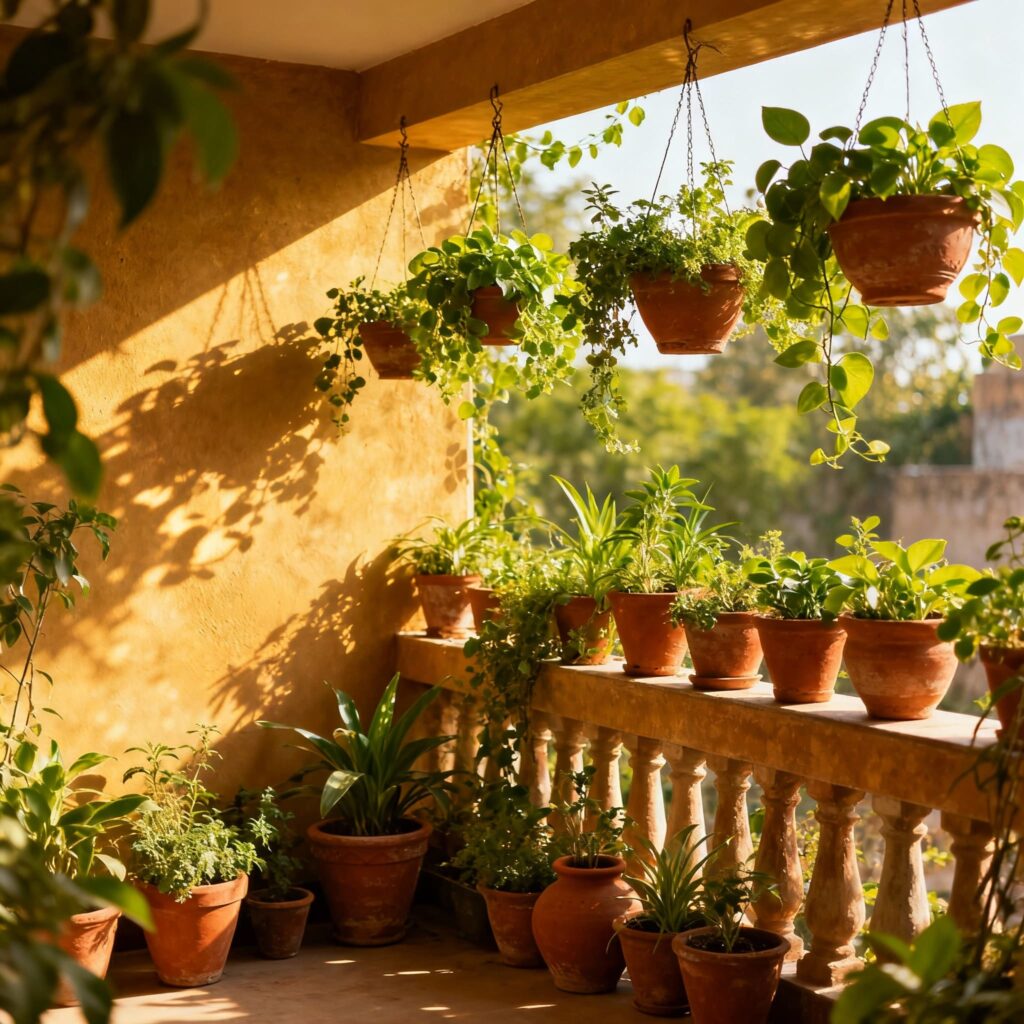
But why is sustainable gardening important? The answer goes far beyond prettier pots and cleaner air. It’s about reimagining the way we live, eat, and interact with nature in our urban homes. According to Down to Earth, even small terrace gardens are proving to be powerful tools for climate resilience in Indian cities.
In this guide, you’ll discover the environmental, economic, and personal benefits of sustainable gardening, and learn exactly how to start your own eco-friendly green space today—even if you’re a complete beginner.
What Is Sustainable Gardening?
At its core, sustainable gardening is all about growing plants in a way that respects the environment, conserves resources, and supports long-term health—for both your garden and the planet.
Instead of relying on chemical fertilizers, excessive water, or plastic pots, sustainable gardening focuses on natural, eco-friendly practices that reduce waste and work with nature, not against it.

Core Principles of Sustainable Gardening
Reducing waste through composting kitchen scraps, reusing containers, and avoiding single-use plastics is the foundation. According to research published in PMC, home gardens significantly contribute to sustainable development by reducing household waste and creating nutrient-rich soil amendments.
Saving water using drip irrigation, rainwater harvesting, and moisture-retaining soil amendments is crucial, especially in water-scarce regions of India. The Times of India regularly features stories about urban gardeners who’ve cut their water bills by 40% through smart irrigation practices.
Using eco-friendly materials like clay pots, bamboo planters, and organic fertilizers instead of synthetic alternatives reduces your carbon footprint significantly.
For Indian gardeners, sustainable gardening is especially practical. Think of it as the modern version of what our grandparents already did—balcony composting with kitchen peels, growing curry patta in clay pots, or collecting rainwater during monsoon for plants.

I remember visiting my grandmother’s terrace in Lucknow during summer vacations. She had dozens of clay pots filled with mint, coriander, and chilies. Every morning, she’d water them with yesterday’s rice water and add vegetable peels to a corner compost pile. She called it “budget gardening,” but it was actually sustainable gardening before the term even became popular.
It’s about using terracotta instead of plastic, nurturing native plants like tulsi and neem, and creating a little green oasis in the midst of concrete high-rises.
Sustainable gardening isn’t just a trend—it’s a return to mindful, resourceful living that fits perfectly into small Indian spaces, tight budgets, and busy lifestyles.
Why Is Sustainable Gardening Important
Why is sustainable gardening important? The answer is multi-layered—it benefits the environment, saves money, and even improves mental well-being.
Environmental Benefits That Matter
Sustainable gardening actively fights pollution and waste. By composting kitchen scraps, we divert organic waste from overflowing landfills and create nutrient-rich soil instead. The Ministry of Environment, Forest and Climate Change reports that Indian cities generate over 62 million tonnes of waste annually, with organic waste comprising nearly 50% of that total.
By growing plants on balconies and terraces, we improve local air quality, reduce the urban heat island effect, and help absorb carbon dioxide from the atmosphere.

Research published in ScienceDirect shows that balcony greenery can reduce indoor temperatures by up to 2.5°C in tropical climates like India, cutting down air conditioning use and energy costs dramatically.
Studies from ScienceDirect also reveal that home vegetable gardens can reduce household greenhouse gas emissions by replacing store-bought produce that travels long distances—sometimes over 1,500 kilometers before reaching your plate.
Every pot of basil or chili you grow is a small but meaningful contribution to a healthier planet.
Reusing planters—like old buckets, tin cans, or bamboo containers—reduces plastic waste, while switching to organic fertilizers (like homemade compost tea or cow dung manure) keeps harmful chemicals out of the soil and water.
Economic Benefits You Can Feel
Sustainable gardening saves money in surprising ways. Growing your own herbs, leafy greens, and vegetables means fewer trips to the market and fresher, chemical-free produce on your plate.

Last monsoon, I started growing coriander and mint on my balcony in Pune. Within two months, I stopped buying these herbs entirely, saving nearly ₹400 per month. That’s ₹4,800 annually—enough to buy quality seeds, soil, and planters for the next season!
Composting eliminates the need to buy expensive fertilizers, and choosing native plants reduces water bills since these varieties naturally thrive in India’s climate with minimal watering.
For apartment dwellers, sustainable gardening also beautifies living spaces without the high costs of store-bought décor or frequent plant replacements.
Mental Health and Well-being
There’s something deeply calming about tending to plants. Studies published in Vidyanchal School Research show that gardening reduces stress, anxiety, and fatigue while boosting mood and cognitive function.
In crowded Indian cities, a balcony garden becomes a mini sanctuary—a place to unwind, reconnect with nature, and feel a sense of accomplishment as seeds sprout and plants flourish.

My colleague Priya once told me she started her balcony garden during the pandemic lockdown. “It gave me purpose,” she said. “Watching those tomato seedlings grow into healthy plants producing fruit felt like a victory during such uncertain times.”
Sustainable gardening isn’t just about the planet—it’s about creating a healthier, happier life for yourself and your family, one terracotta pot at a time.
How Does Gardening Help Climate Change
How does gardening help climate change? More than you might think.
Every plant you grow plays a role in mitigating climate change by absorbing carbon dioxide (CO2) from the atmosphere and locking it away in plant tissues and soil—a process called carbon sequestration.
Plants act as natural air filters. Through photosynthesis, they pull CO2 out of the air and convert it into oxygen and biomass (stems, leaves, roots). According to Earth.org, sustainable gardening practices can significantly reduce an individual’s carbon footprint.
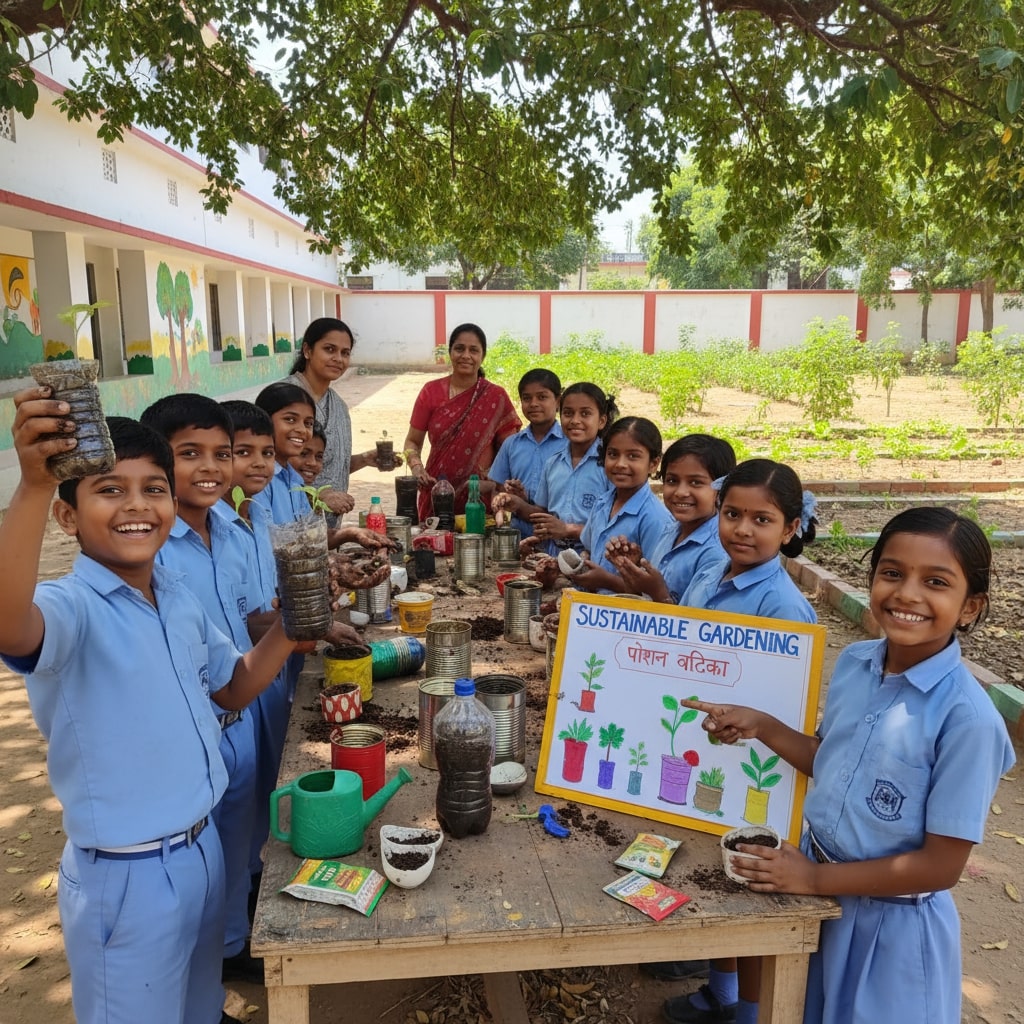
The larger and faster a plant grows, the more carbon it stores. Even small balcony plants like tomatoes, herbs, and leafy greens contribute to this process, and if every urban gardener in India planted just a few pots, the collective impact would be significant.
Research from ScienceDirect indicates that vegetable gardens can reduce carbon emissions by up to 2 kg per kg of vegetables compared to store-bought produce, primarily by eliminating transportation and packaging waste.
But carbon absorption is just one piece of the puzzle.
Growing Food Locally Reduces Your Carbon Footprint
Growing food locally—even on a balcony—reduces the carbon footprint associated with transporting produce from distant farms to your plate. When you grow your own spinach, strawberries, or chilies, you’re cutting down on fuel emissions, packaging waste, and the energy used in industrial farming.
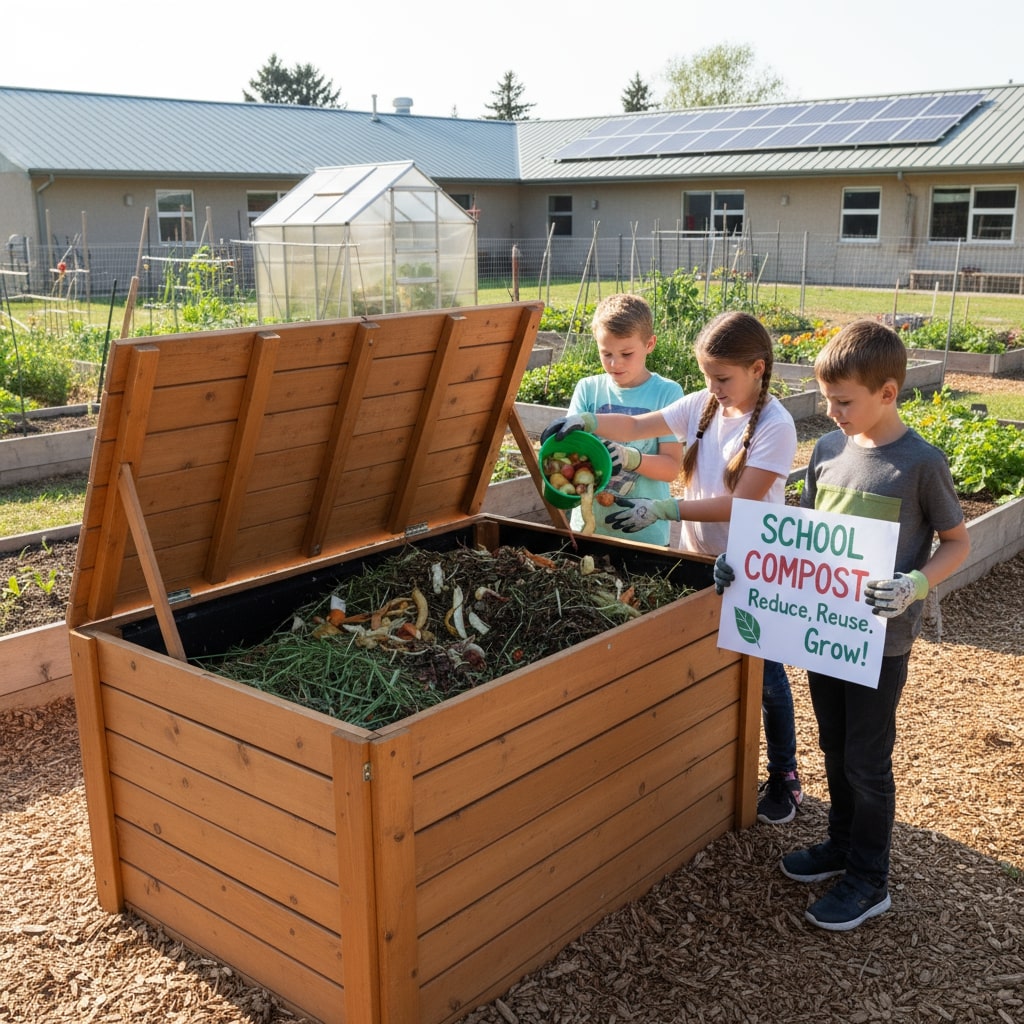
Think about it: that bunch of spinach in your local grocery store might have traveled from Nashik to Delhi—over 1,100 km—in refrigerated trucks before reaching you. Your balcony spinach? Zero food miles.
Additionally, sustainable gardening practices like composting kitchen waste reduce methane emissions from landfills, while using organic fertilizers eliminates the carbon-intensive production of synthetic chemicals.
If you’re ready to start growing your own food at home, check out this guide on creating a Balcony Fruit and Vegetable Garden for practical tips tailored to small Indian spaces.
The truth is simple: how does gardening help climate change? By turning every balcony, terrace, and windowsill into a tiny carbon sink and a source of fresh, local food.
Sustainable Garden Ideas for School
Sustainable garden ideas for school aren’t just educational—they’re transformative.
School gardens teach children the importance of sustainability, environmental stewardship, and where their food comes from, all while fostering responsibility and teamwork.
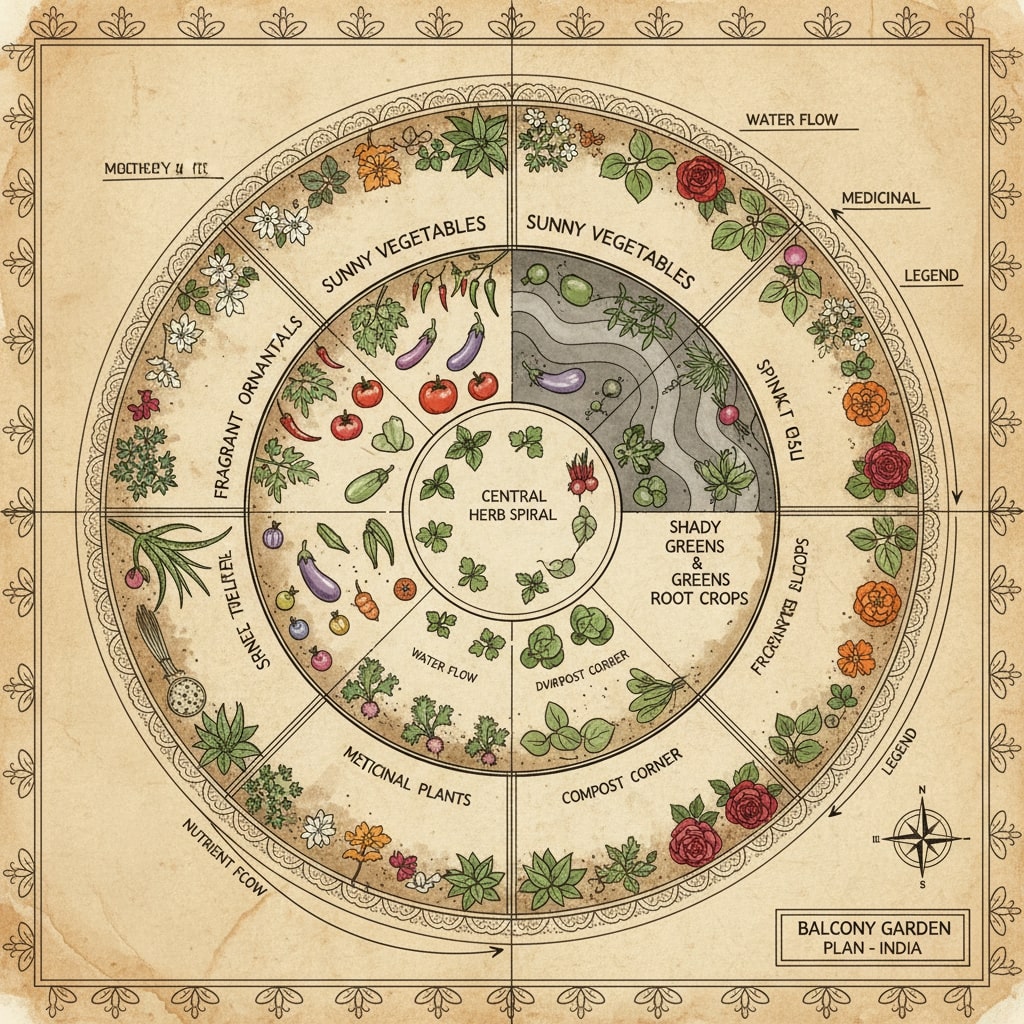
Research published in PMC shows that students who participate in school gardens have increased fruit and vegetable consumption, improved dietary fiber intake, better BMI scores, and higher academic achievement.
In India, many schools are embracing green initiatives by setting up small vegetable gardens, compost bins, and upcycled planters on campuses. For example, government schools in Chennai have successfully grown over 34 kg of vegetables in just 45 days using raised beds and drip irrigation systems—all of which went directly into students’ mid-day meals, as reported by Vikaspedia.
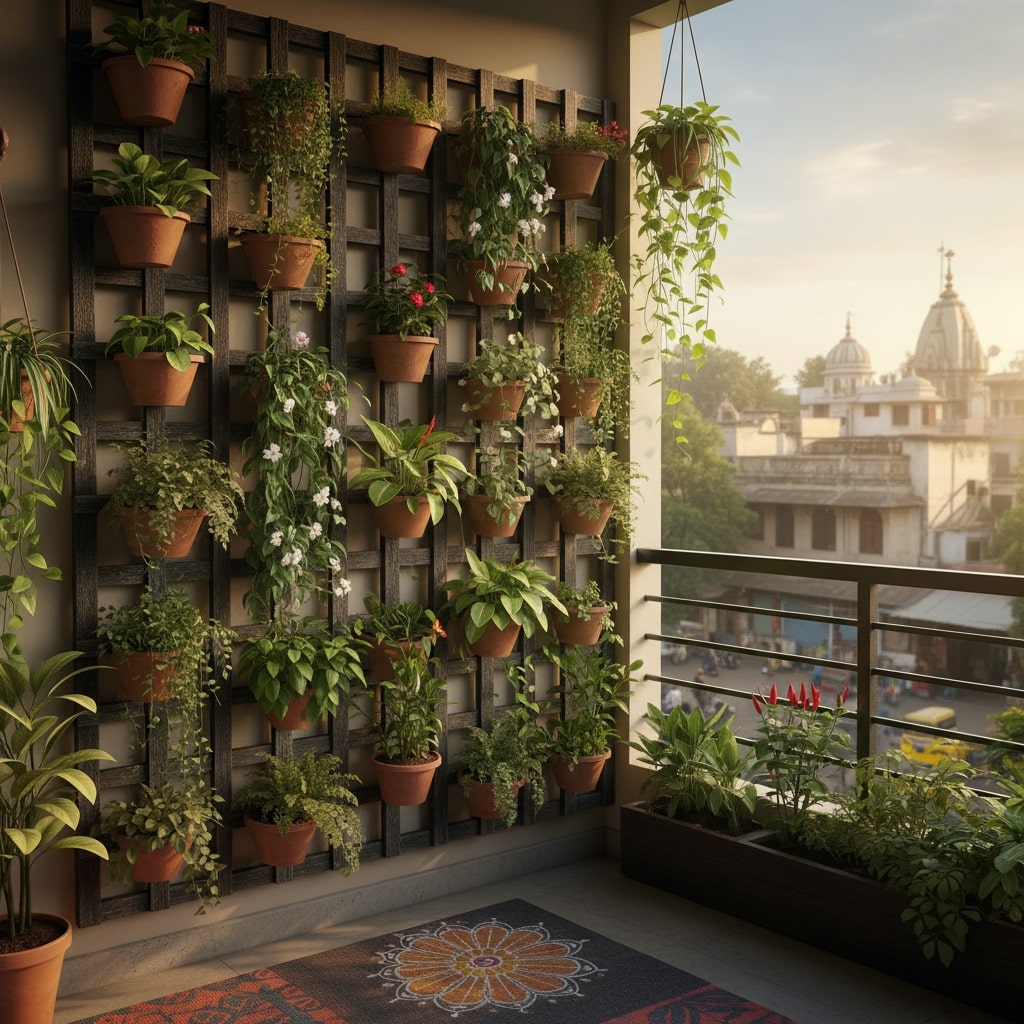
Similarly, schools in Delhi and Mumbai have created butterfly gardens, herb gardens, and mini urban forests using waste materials like old tyres, tin cans, plastic bottles, and wooden pallets through initiatives like Swechha’s Greening Schools Program.
Simple Sustainable Garden Ideas for School
Compost bins where students collect fruit peels and vegetable scraps from lunch to create nutrient-rich compost for garden beds teach waste management in action.
Recycled planters where old buckets, bottles, and cans become creative containers for herbs, flowers, and leafy greens spark creativity and environmental consciousness.
Native plant gardens that teach kids about biodiversity and climate adaptation by growing local species like tulsi, neem, or seasonal vegetables connect children to their cultural and ecological heritage.
Rainwater harvesting systems that collect monsoon water for irrigation demonstrate water conservation in real time.
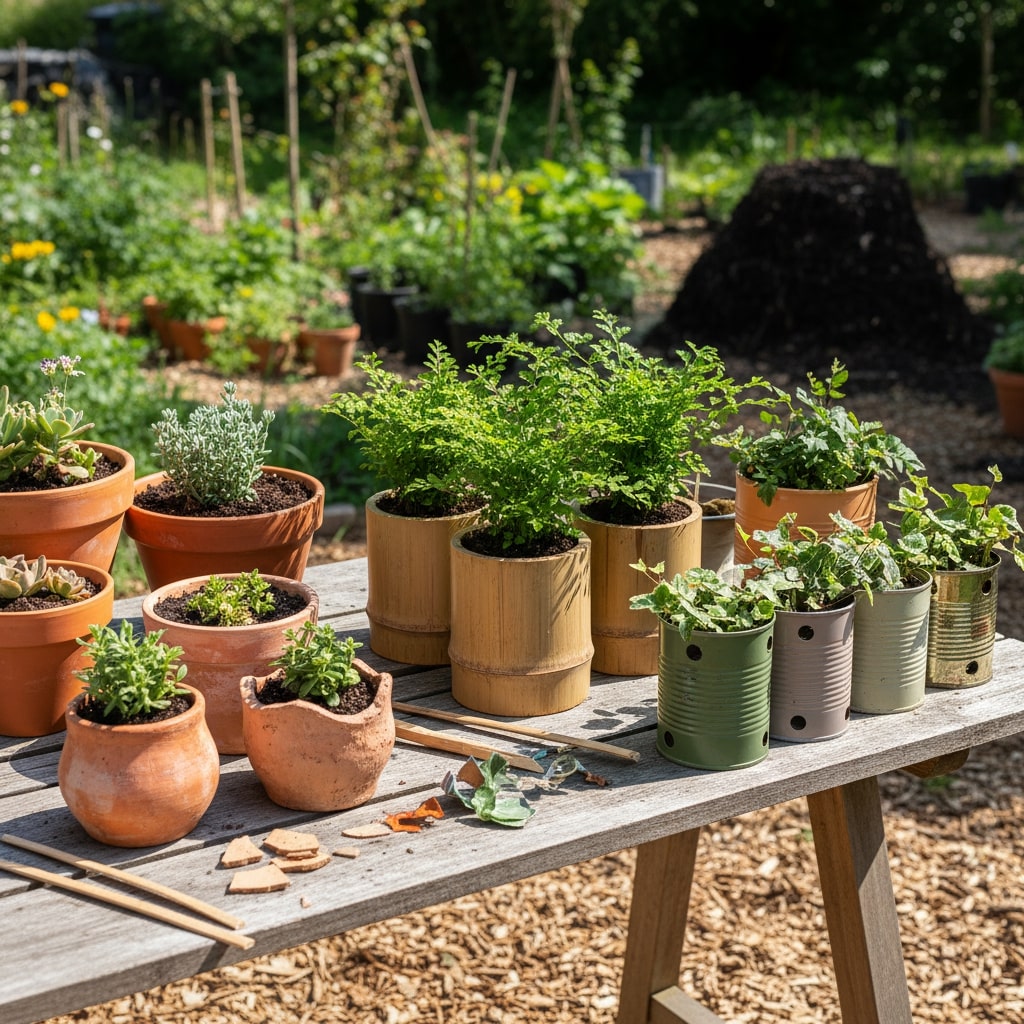
Teaching sustainability early creates lifelong habits. When children plant seeds, watch them grow, and harvest their own food, they develop a deep connection to nature and a sense of responsibility for the environment, as emphasized by Nourishing Schools.
Sustainable garden ideas for school empower the next generation to become climate-conscious citizens who understand the value of green spaces, organic food, and eco-friendly living.
Step-by-Step Guide to Start a Sustainable Garden at Home
Starting a sustainable garden at home is easier than it sounds—even if you’ve never grown a single plant before.
Here’s a beginner-friendly, step-by-step approach tailored for Indian balconies, terraces, and small spaces.
Step 1: Plan Your Balcony or Terrace Layout
Before buying a single pot, assess your space. How much sunlight does your balcony or terrace get throughout the day?
Most vegetables and herbs need at least 4–6 hours of direct sunlight, while shade-loving plants like ferns and palms can thrive with less.
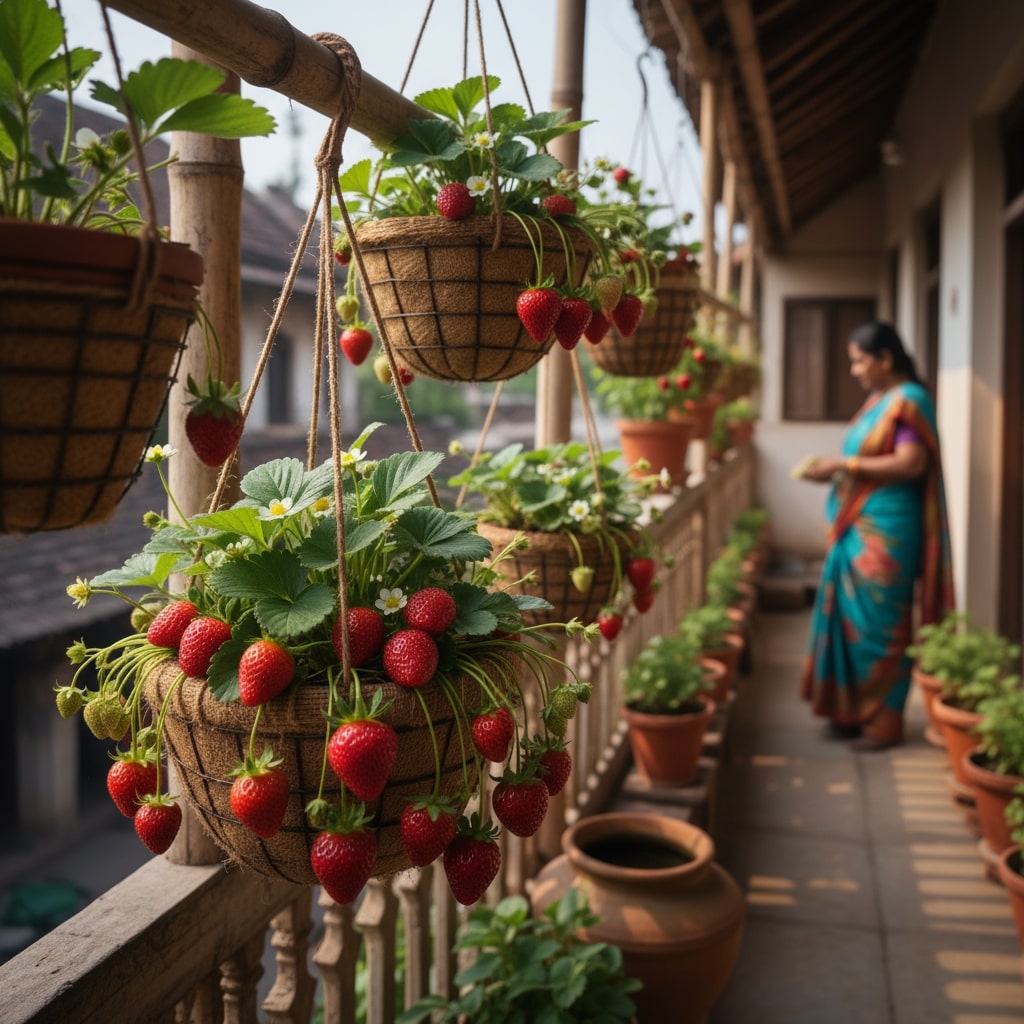
Sketch a simple layout: designate zones for herbs (like coriander, mint, and curry leaves), vegetables (tomatoes, chilies, spinach), and ornamental plants (marigolds, tulsi).
Use vertical space wisely—wall-mounted planters, hanging pots, and tiered stands maximize growing area without cluttering the floor.
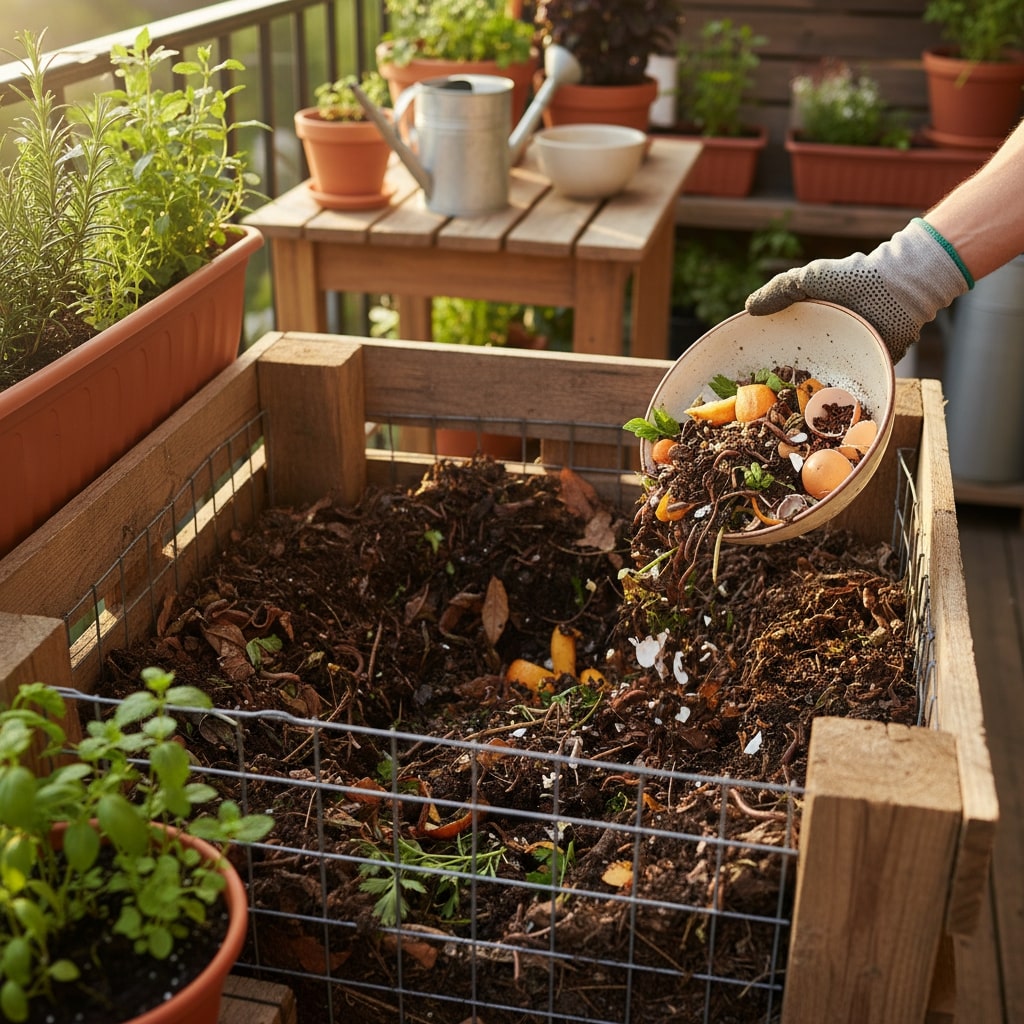
For creative and space-saving decoration ideas, explore this guide on Apartment Balcony Indian Balcony Garden Decoration Ideas.
Step 2: Choose Eco-Friendly Planters
Ditch plastic and opt for sustainable materials like terracotta, clay, bamboo, or upcycled containers.
Clay pots are porous, which helps regulate soil moisture and prevents root rot—perfect for India’s hot climate.

The Kreliv Bamboo Terracotta Hanging Planter is an excellent choice for small spaces, combining eco-friendly materials with stylish design.
I personally switched from plastic to terracotta pots last year, and the difference was remarkable. My herbs stayed healthier, required less frequent watering, and the pots looked so much better aesthetically.
Step 3: Start Growing Your Own Food
Begin with easy-to-grow edibles like tomatoes, strawberries, spinach, or herbs.
Strawberries, for instance, grow beautifully in hanging planters and require minimal care—ideal for beginners.
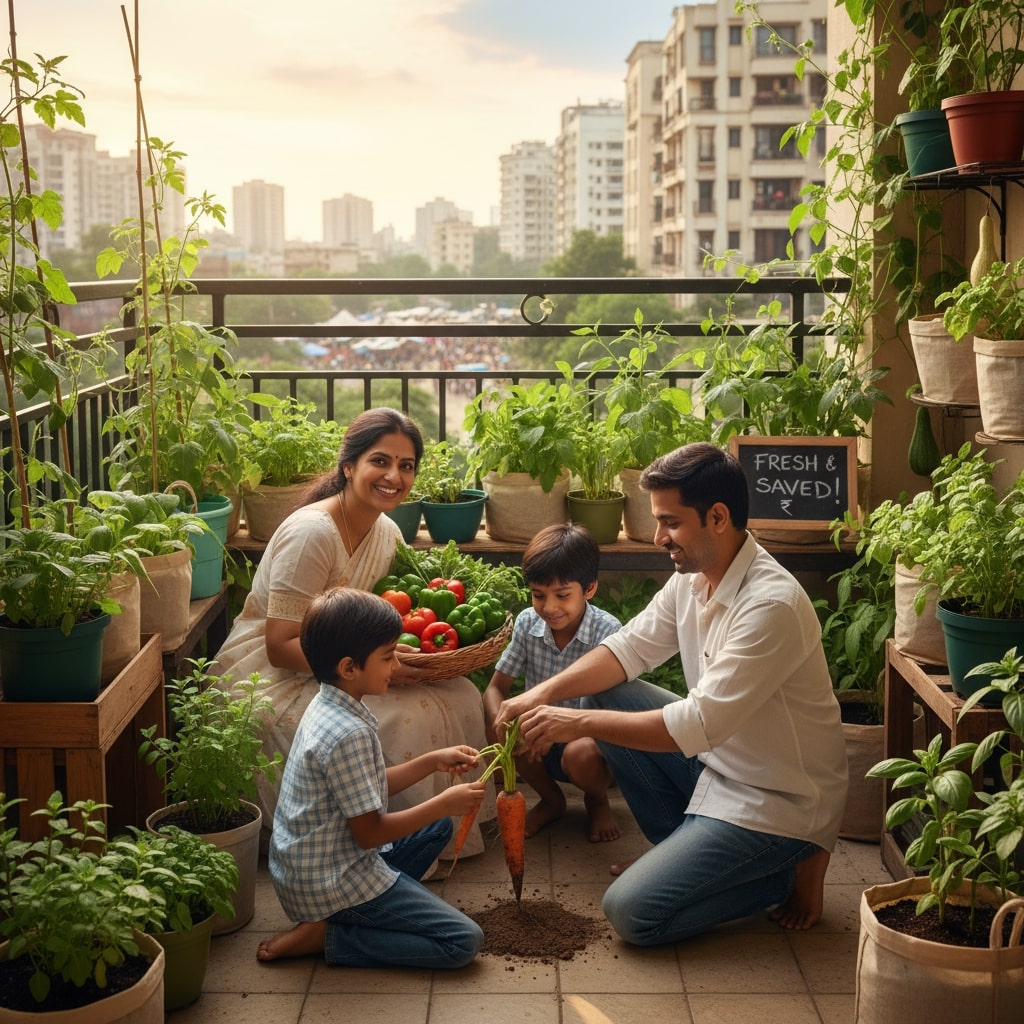
Check out the Hanging Strawberry Planter – Home Depot for a space-saving solution that delivers fresh fruit right to your balcony.
Step 4: Maintain with Natural Compost and Organic Care
Sustainable gardening means saying no to chemical fertilizers.
Instead, compost kitchen scraps (vegetable peels, eggshells, coffee grounds) in a small balcony bin to create rich, organic fertilizer.

Water wisely—early mornings or late evenings are best to minimize evaporation. Use mulch (dried leaves, coconut coir) to retain soil moisture and reduce watering frequency.
For pest control, try natural remedies like neem oil spray or companion planting (growing marigolds near vegetables to repel insects).
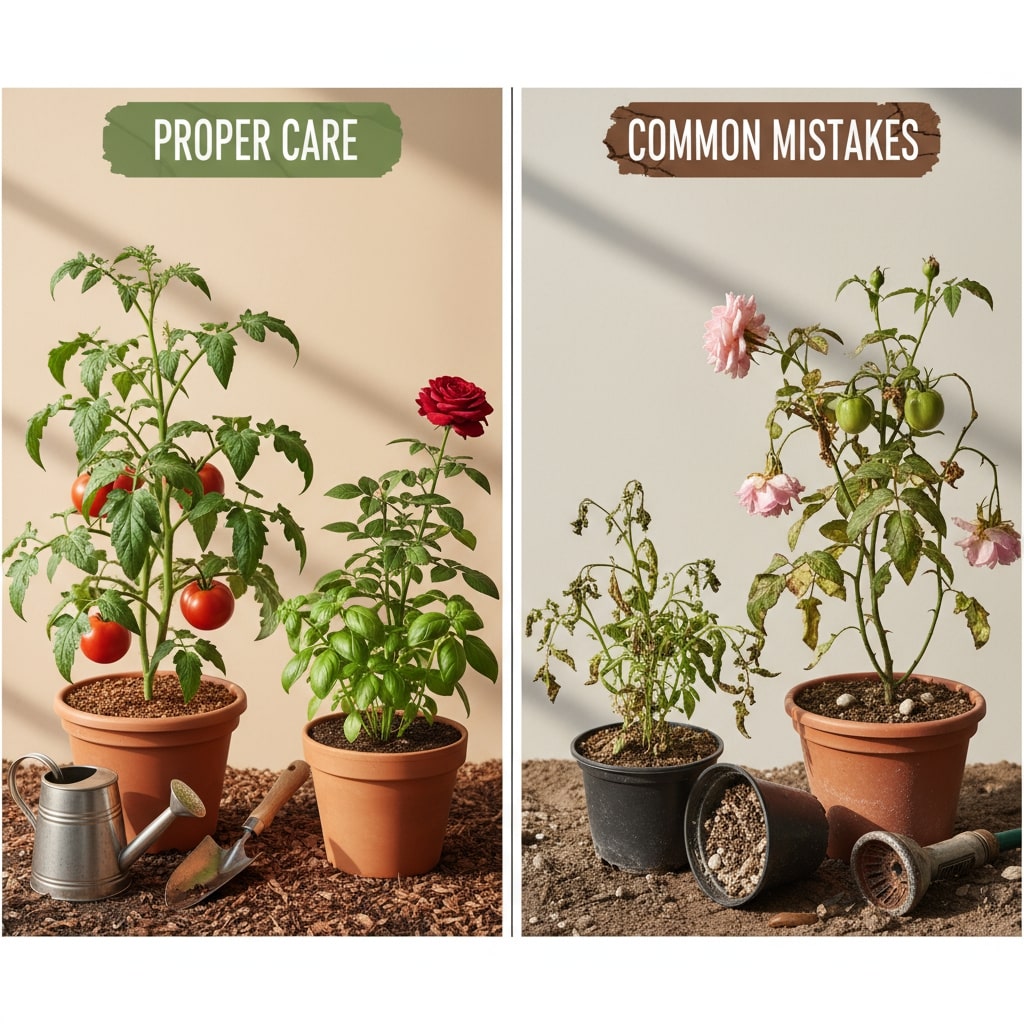
By following these four simple steps, any Indian beginner can create a thriving, sustainable garden at home—no backyard required.
Best Eco-Friendly Planters for Indian Balcony Gardens (2025)
Choosing the right sustainable planter is crucial for successful balcony gardening. Here’s a comparison of the best eco-friendly options available in India:
| Product | Material | Best For | Approximate Price | Where to Buy |
|---|---|---|---|---|
| Kreliv Bamboo Terracotta Hanging Planter | Bamboo & Terracotta | All vegetables, herbs, and flowers | ₹499-799 | Amazon |
| Traditional Clay Pots (Set of 5) | Terracotta/Clay | All vegetables, herbs, flowers | ₹299-599 | Amazon |
| Coco Coir Grow Bags | Coconut Fiber | Root vegetables, tomatoes, spinach | ₹199-399 | Amazon |
| Upcycled Wooden Crates | Reclaimed Wood | Multiple plants, vertical gardens | ₹350-650 | Amazon |
| Hanging Strawberry Planter | Plastic (reusable) / Fabric | Strawberries, cascading herbs | ₹599-999 | Amazon |
Benefits of Sustainable Gardening for Indian Households
Sustainable gardening offers tangible, everyday benefits for Indian households—especially those living in apartments and urban areas.
Save money: Growing your own herbs, leafy greens, and vegetables reduces grocery bills and eliminates the cost of chemical fertilizers when you compost at home. Native plants require less water and care, further lowering maintenance expenses.
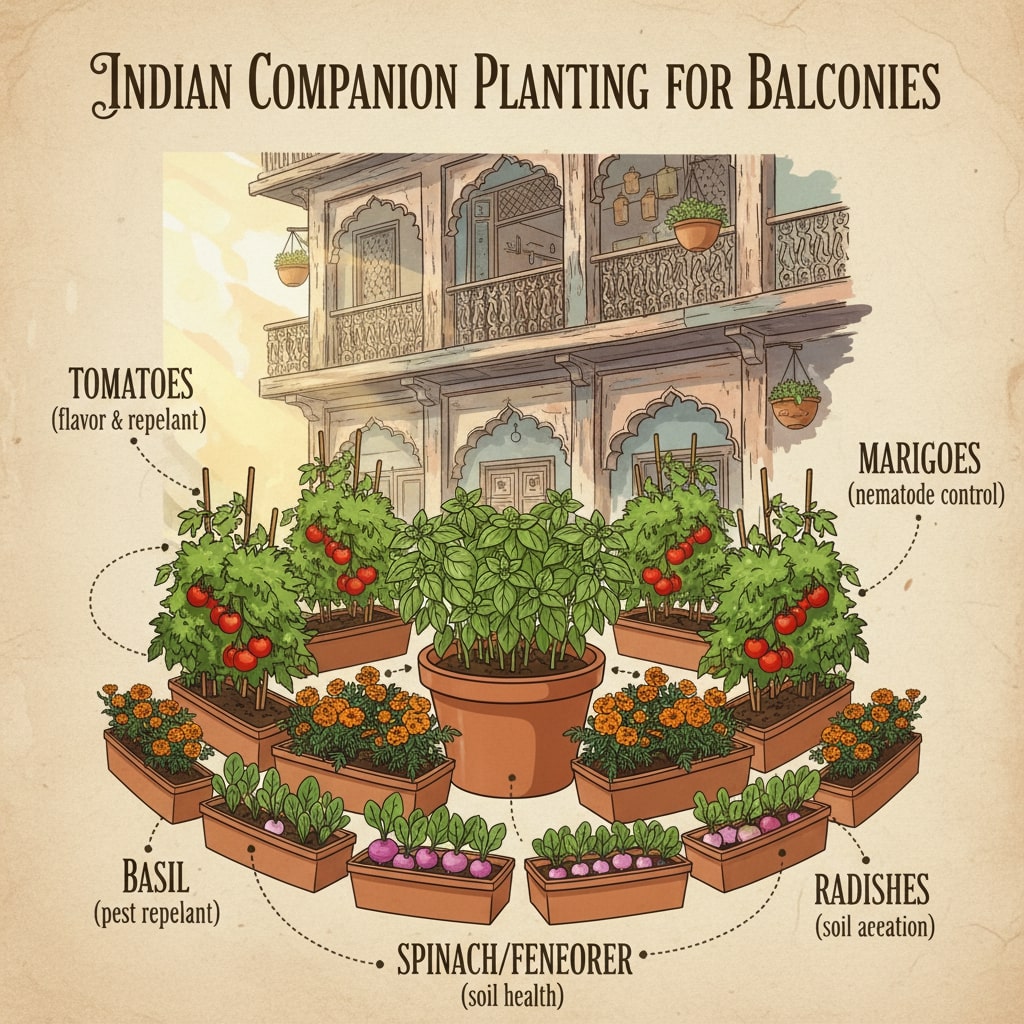
Cleaner air: Plants naturally filter pollutants, release oxygen, and improve indoor and outdoor air quality. In crowded cities like Delhi, Bangalore, and Mumbai, balcony gardens act as mini air purifiers, reducing respiratory issues and creating healthier living environments. According to The Hindu, urban greening initiatives have shown measurable improvements in air quality indices.
Studies published in ScienceDirect show that balcony greenery can reduce indoor temperatures by up to 2.5°C through shading and evapotranspiration, cutting air conditioning costs significantly.
Better environment: Every pot of basil, every composted banana peel, every terracotta planter contributes to waste reduction, carbon sequestration, and biodiversity. Sustainable gardening transforms balconies into micro-ecosystems that support pollinators like bees and butterflies, which are essential for urban food security.
Aesthetic improvement: A lush, green balcony or terrace enhances the beauty and value of any home. It creates a calming, inviting space for morning chai, evening relaxation, or weekend family gatherings.
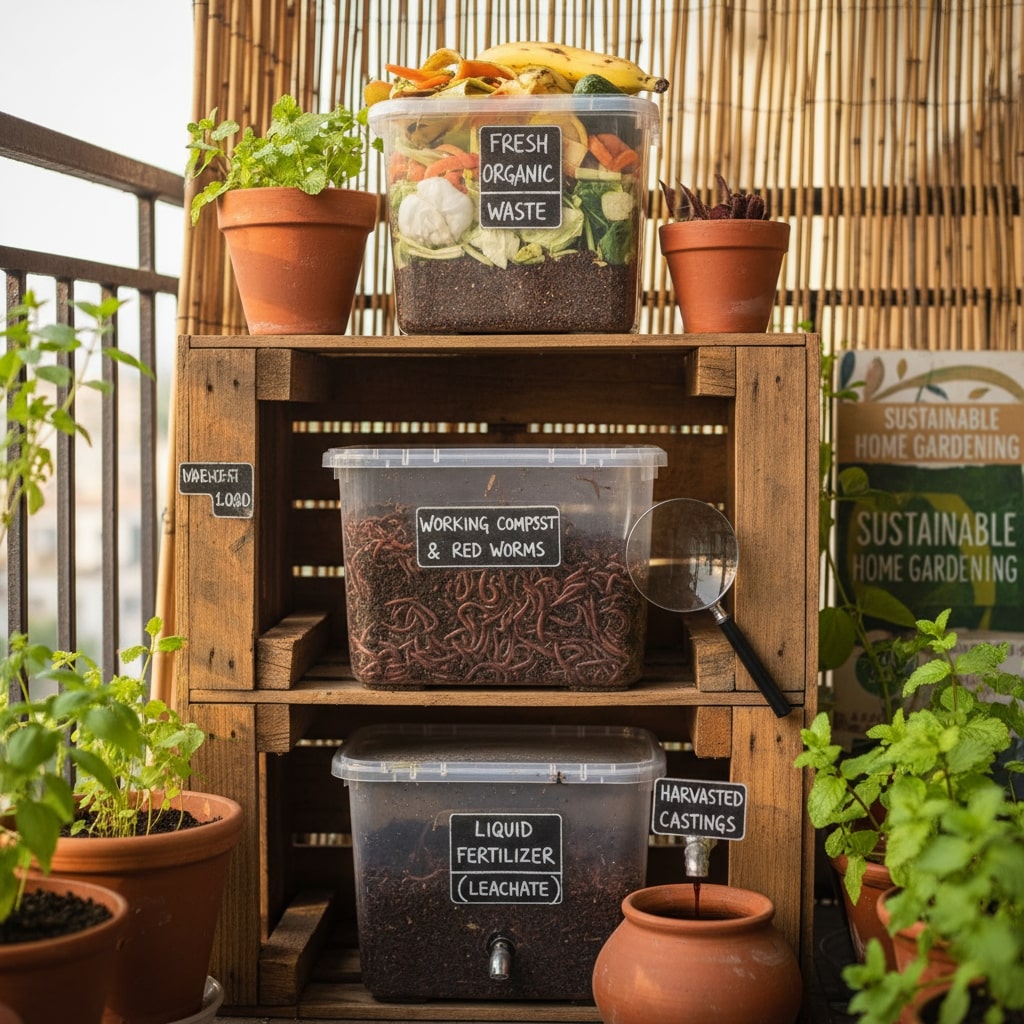
For Indian households juggling tight budgets, limited space, and busy schedules, sustainable gardening is a practical, rewarding solution that pays dividends in health, savings, and environmental impact.
Common Beginner Mistakes to Avoid
Even the most enthusiastic beginners make mistakes when starting a sustainable garden—but the good news is that these pitfalls are easy to avoid.
Overwatering: This is the number one killer of balcony plants. Indian climates vary widely, and not every plant needs daily watering. Check soil moisture by sticking your finger an inch deep—if it’s damp, skip watering. Clay pots and mulch help regulate moisture naturally.
Using chemical fertilizers and pesticides: Synthetic chemicals harm beneficial insects, pollute soil, and undermine the whole purpose of sustainable gardening. Instead, use homemade compost, cow dung manure, or compost tea for nutrition, and natural pest control methods like neem oil, garlic spray, or companion planting.
Ignoring local and native plants: Many beginners are tempted by exotic plants that struggle in India’s heat, humidity, or monsoons. Stick to native varieties like tulsi, curry leaves, marigold, and seasonal vegetables that naturally thrive in your region with minimal care.
Not planning for sunlight: Placing sun-loving plants in shaded corners (or vice versa) leads to poor growth and frustration. Observe your balcony’s sunlight patterns before choosing plants.
Skipping compost: Kitchen waste is free fertilizer—don’t throw it away! Start a small balcony compost bin to turn scraps into nutrient-rich soil.
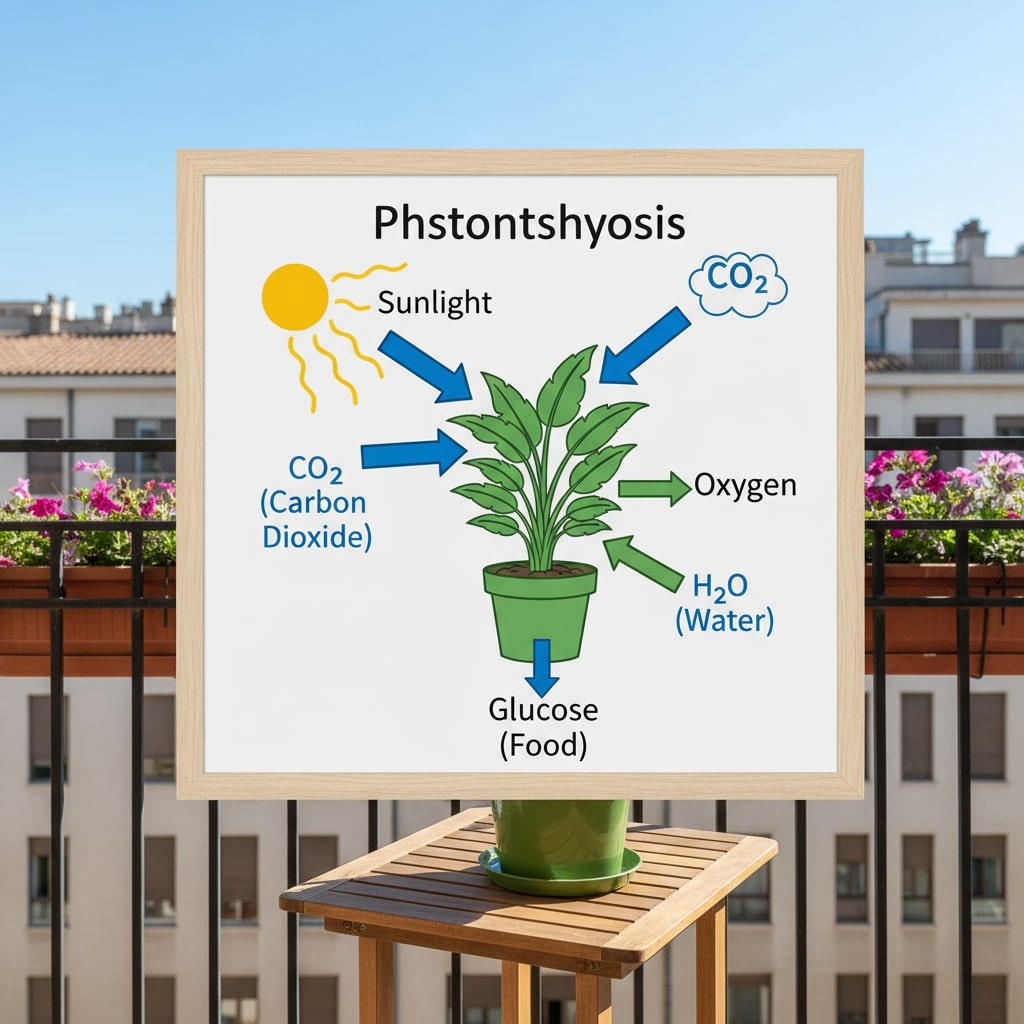
By avoiding these common mistakes and embracing sustainable alternatives, beginners can enjoy healthier plants, better harvests, and a guilt-free green space.
Advanced Tips: Taking Your Sustainable Garden to the Next Level
Once you’ve mastered the basics, consider these advanced sustainable gardening techniques:
Companion planting: Grow complementary plants together—basil with tomatoes, marigolds with vegetables—to naturally repel pests and improve growth.
Succession planting: Stagger your planting times so you have continuous harvests throughout the season instead of one big harvest.
Seed saving: Collect seeds from your healthiest plants to replant next season, reducing costs and preserving locally adapted varieties.
Vermicomposting: Use red worms in a small bin to create premium compost faster than traditional methods—perfect for balcony spaces.

These techniques might sound advanced, but they’re surprisingly accessible once you’ve built confidence with basic sustainable gardening practices.
Conclusion
Why is sustainable gardening important? Because it empowers Indian households to fight climate change, reduce waste, save money, and cultivate healthier, happier lives—all from the comfort of a balcony or terrace.
From understanding how does gardening help climate change through carbon absorption and local food production, to exploring creative sustainable garden ideas for school that educate the next generation, sustainable gardening is more than a hobby—it’s a lifestyle choice with lasting impact.
Whether you’re a complete beginner or an experienced plant parent, starting small is the key. Choose eco-friendly planters, compost kitchen scraps, grow native plants, and watch your green space flourish.
👉 Ready to transform your balcony into an eco-friendly oasis? Start with these sustainable gardening tips and grow your own fresh food today!
Explore more beginner-friendly guides, DIY tips, and sustainable gardening inspiration at FlatGardening.com—your trusted companion for apartment gardening in India.
Start today, grow sustainably, and share your green journey with the world!
Frequently Asked Questions
Q: Is sustainable gardening easy to start at home?
A: Absolutely! Sustainable gardening is beginner-friendly and works perfectly in small Indian spaces like balconies and terraces. Start with easy plants like herbs or tomatoes, use eco-friendly planters, and compost kitchen scraps for natural fertilizer.
Q: How does gardening help climate change in practical terms?
A: Plants absorb carbon dioxide through photosynthesis and store it in their tissues and soil, acting as natural carbon sinks. Growing food locally also reduces transportation emissions and packaging waste. Studies show home gardens can reduce greenhouse gas emissions by up to 2 kg per kg of vegetables compared to store-bought produce.
Q: What are some simple sustainable garden ideas for school projects?
A: Schools can set up compost bins, use recycled containers as planters, grow native plants, or create mini vegetable gardens that feed students. These projects teach sustainability, responsibility, and environmental awareness. Research shows students participating in school gardens have improved nutrition and academic performance.
Q: Can balcony gardening really fight climate change?
A: Yes! Even small balcony gardens contribute to carbon sequestration, reduce urban heat (by up to 2.5°C), improve air quality, and cut food transportation emissions. If every urban household in India planted just a few pots, the collective environmental impact would be significant.
Q: How much money can I save with sustainable balcony gardening?
A: Sustainable gardening reduces grocery bills by providing fresh herbs and vegetables (potentially saving ₹3,000-5,000 annually), eliminates fertilizer costs through composting, and lowers water bills by using native plants that need minimal watering. It also reduces energy costs by cooling indoor temperatures naturally.
Author Bio
Written by Zaid Ansari, gardening enthusiast and founder of FlatGardening.com, a blog dedicated to helping Indian beginners grow beautiful, eco-friendly balcony gardens using simple DIY methods, sustainable practices, and expert tips tailored for apartment living. Zaid has been practicing sustainable gardening in his Pune apartment for over five years and loves sharing practical, budget-friendly tips with fellow urban gardeners across India.